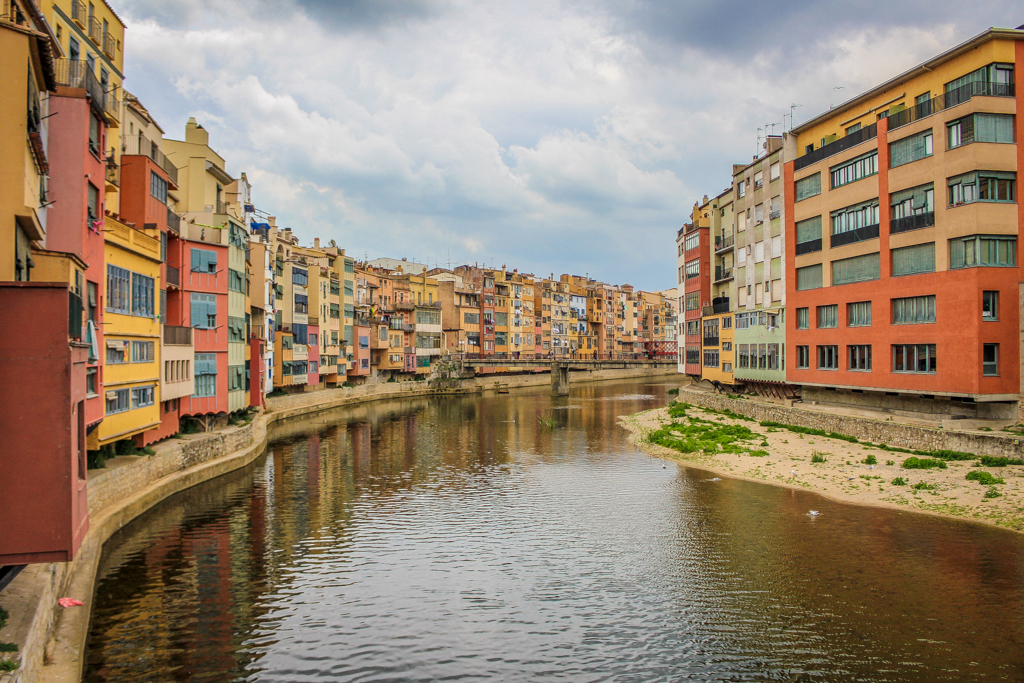Those colors.
Those dusty reds and burnt oranges, those muted yellows and sandy browns.
As I crossed the River Onyar for the very first time, the sight of Girona’s well-known color blocked apartments was seared into my memory. It was just the first of many visions that would endear me to this sleepy medieval town over the course of my two quick visits.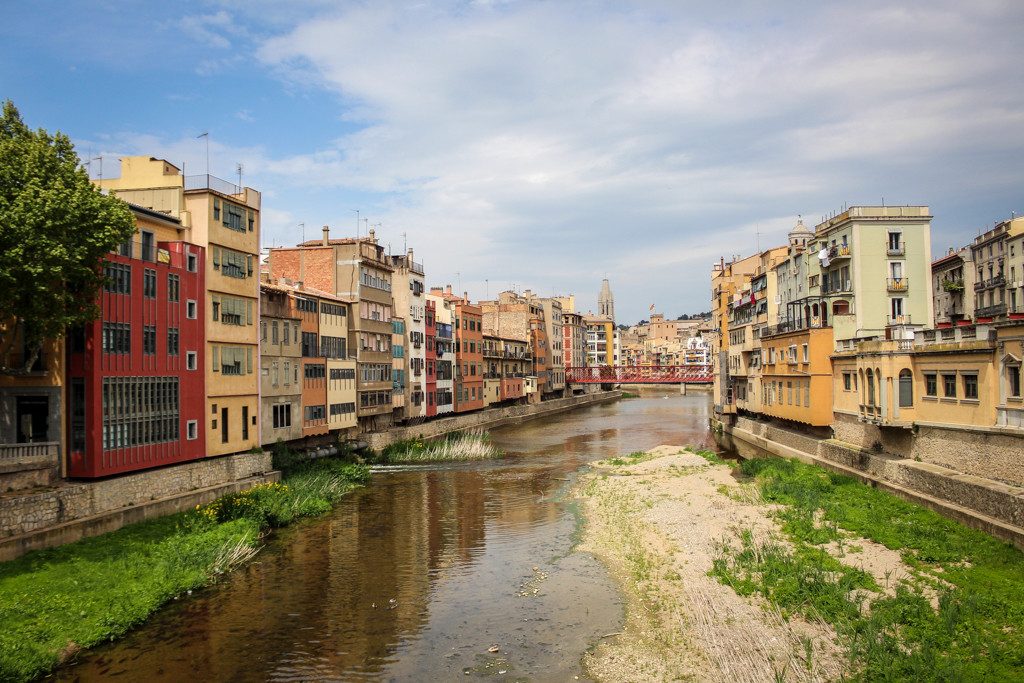
Truth be told, I knew little of the city of Girona, one of the oldest in the region of Catalonia, before my arrival in Barcelona. Luckily for me, at just a hop, skip, and a jump from the TBEX conference location of Lloret de Mar, I was able to explore its peaceful streets, if only briefly, and come to know its history, if only vaguely.
Perhaps little Girona isn’t always so serene, but during the month of May, this feeling permeated the streets. The sun bore strongly, but a gentle breeze mitigated the heat just enough to make hours of wandering tolerable; every so often, clouds overtook the sky and shed a few merciful drops.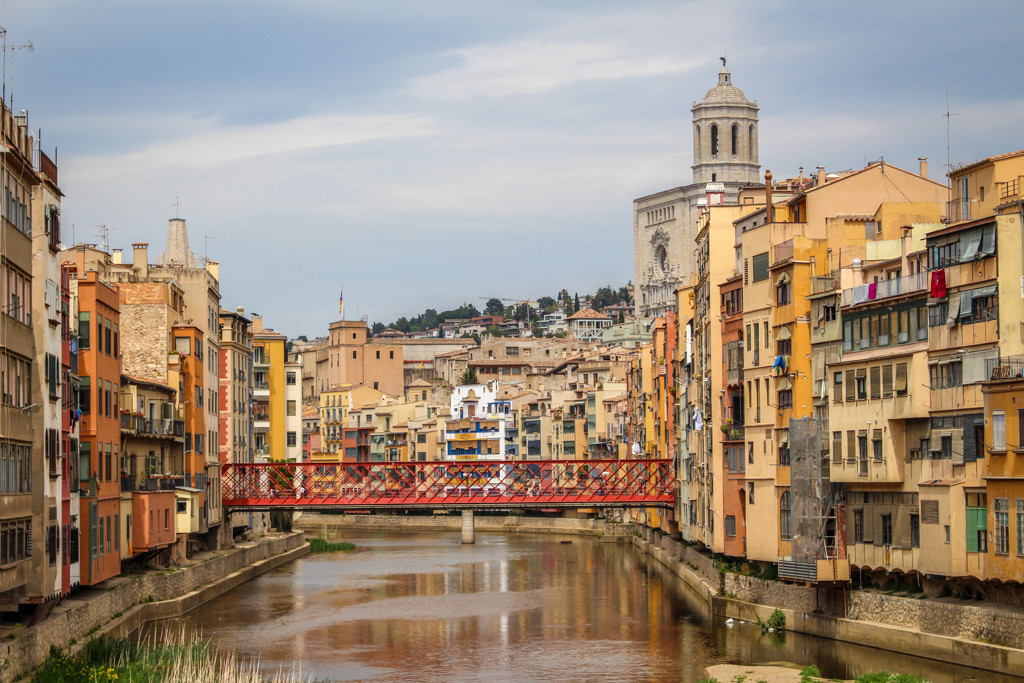
The city’s rambla (every Spanish city has its own rambla, or walking street; the name derives from the archaic Catalan verb ramblar, or to stroll), wound alongside the River Onyar, a strip of small shops and cafes with outdoor seating, shaded and green, dotted with tourists from as near as Barcelona and as far as Japan or the US.
A quick detour to the Eiffel Pedestrian Bridge was a must–and yes, that’s the Eiffel you think it is. This red iron bridge is the most famous of Girona. Its formal name is Pont de les Peixateries Velles which, though I’m slightly suspicious of this answer, translates from Catalan to mean “The Old Fishmonger’s Bridge.” Dubious name aside, this early project of Gustave Eiffel is worth a look; it was constructed in 1877, well before his tower in Paris earned him worldwide renown.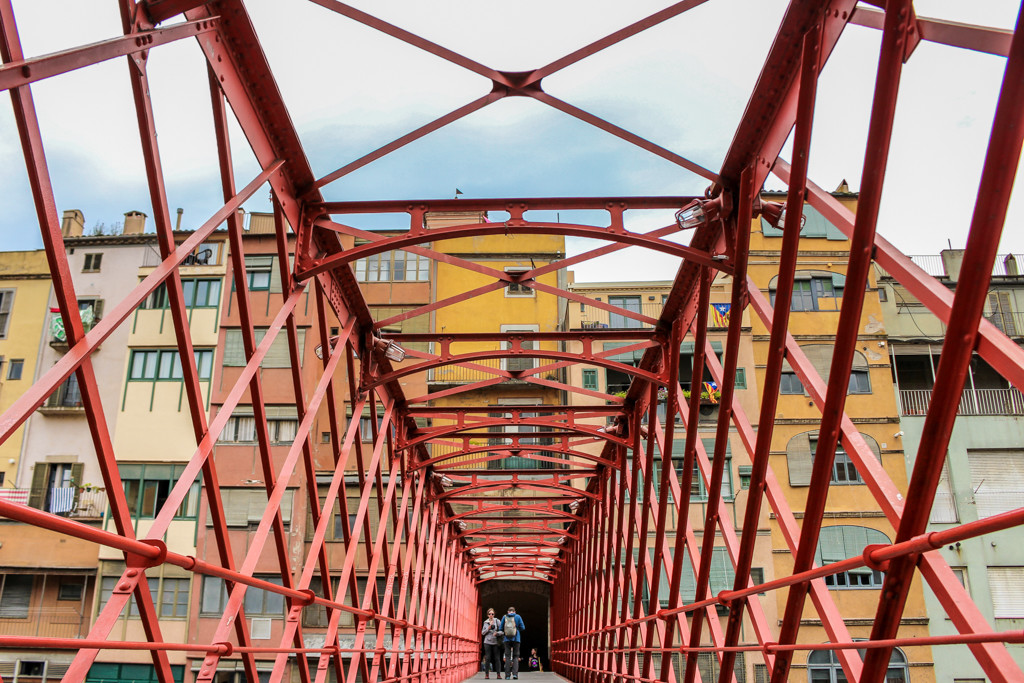
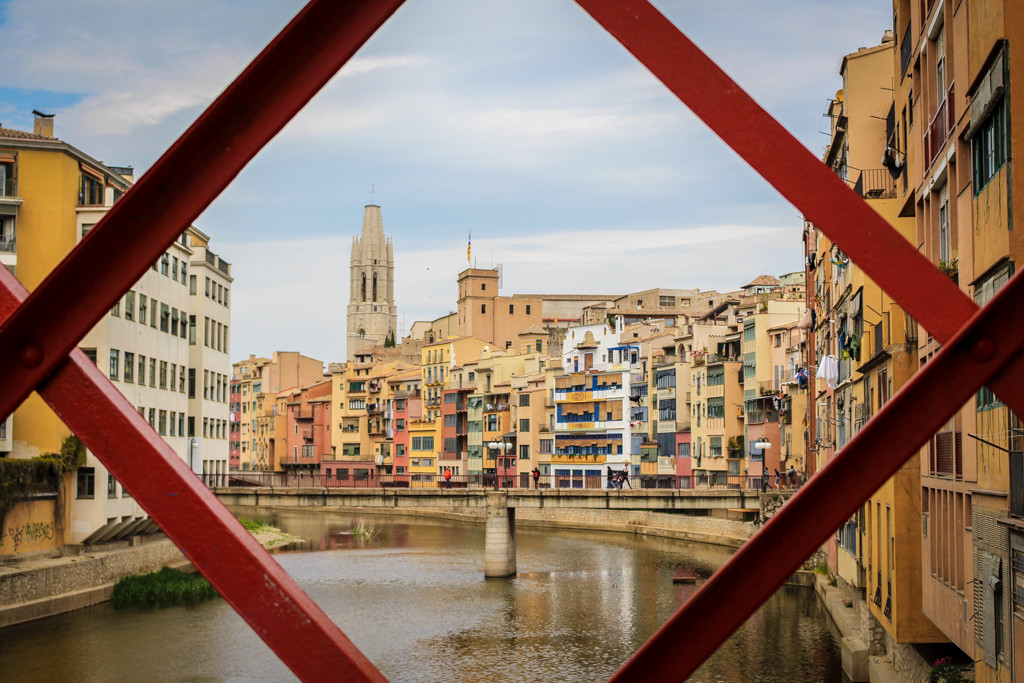
Venturing further into the narrow streets of Girona’s Old Town, I found reprieve from the beating sun. It happened, also, to be an exercise in willpower as I passed gelaterías to my right, churros con chocolate to my left, and bakeries selling beautiful macarons on just about every corner.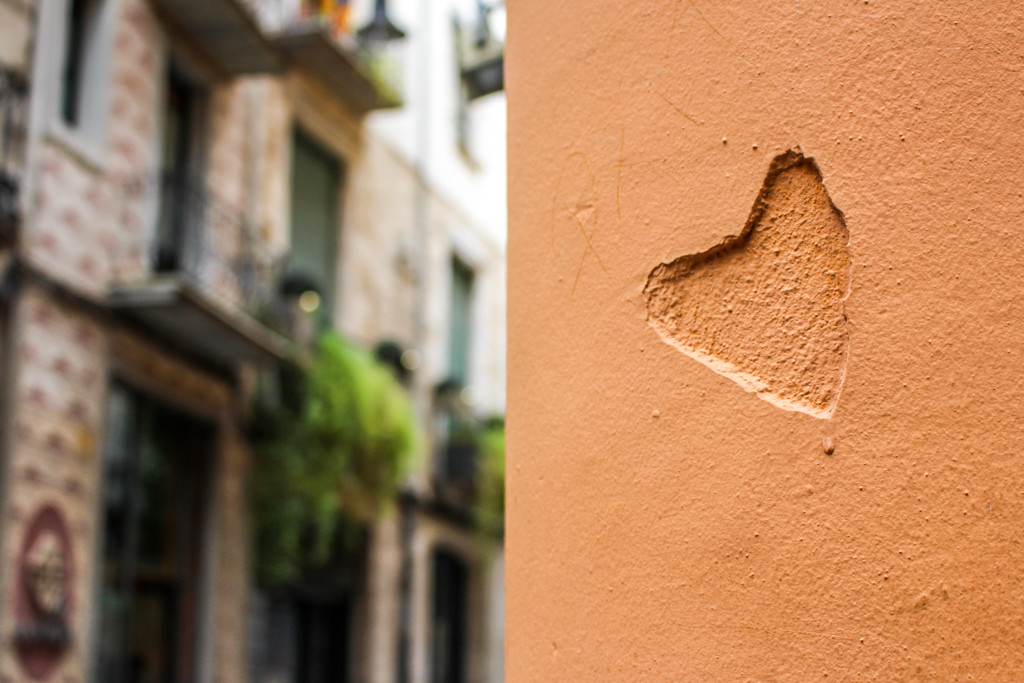
As the narrow streets began to open once again and the bricks beneath my feet were replaced with stone, I began the ascent into the walled medieval quarter toward the Força Vella fortress. Built by Romans in the first century BC, this defensive rampart transported me back through time.
Continuing onward and upward, the gentle, bell-like sounds of fingers tapping on steel hang drums kissed the rose-scented air. I wished I could stay for days–even weeks.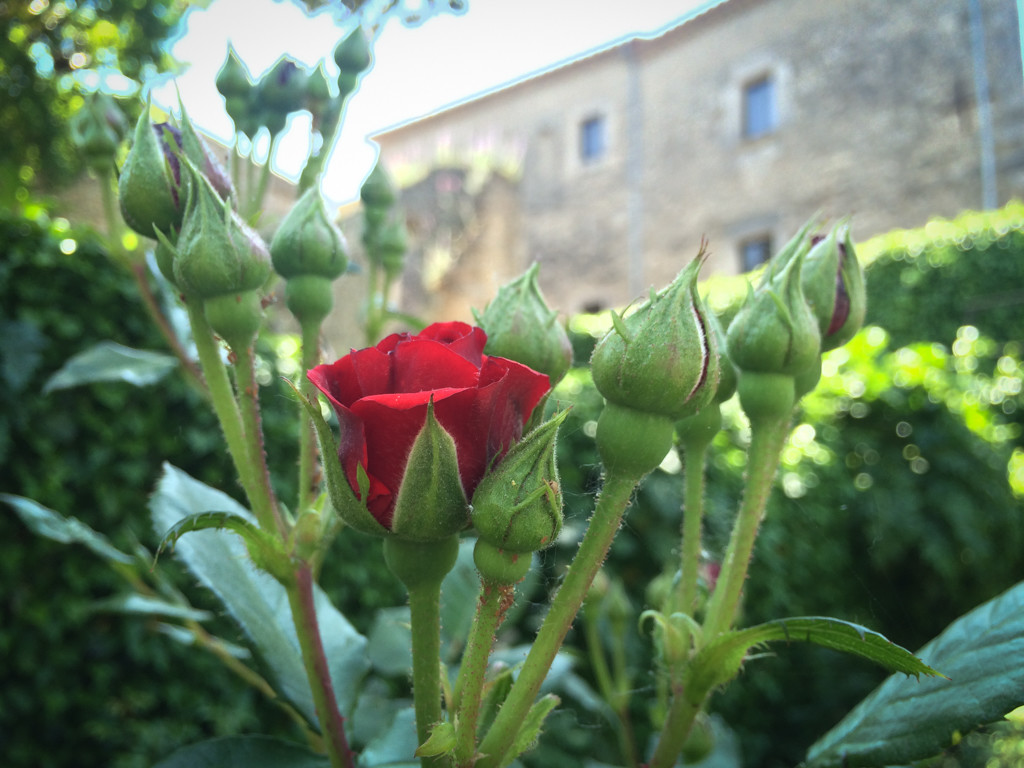
On top of the stone walls looking down over the city, my eyes fell on red rooftops and fluffy green trees, and the occasional bell tower. In the distance, modest hills (I’d hardly call them mountains) rose to touch the clouds.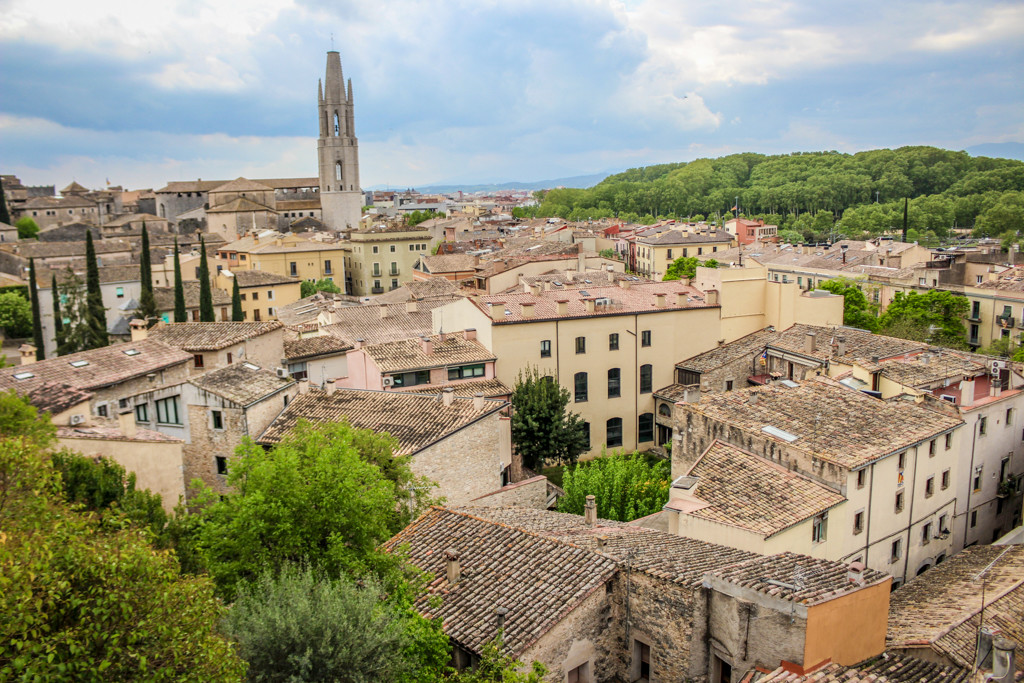
In the revitalized Jewish Quarter, now one of the city’s main attractions, I encountered both beauty and oddities. The cramped streets served as proof of only nominal tolerance of Girona’s Jewish community, the second-largest in Spain during the medieval years; in 1492, any Jews refusing to convert to Catholicism were forcefully expelled from the country.
Completing my carefully planned loop brought me back to the open streets along the River Onyar. I paused again at the Pont de Pedra (stone bridge), gazing north toward the crisscrossed iron of Eiffel’s creation.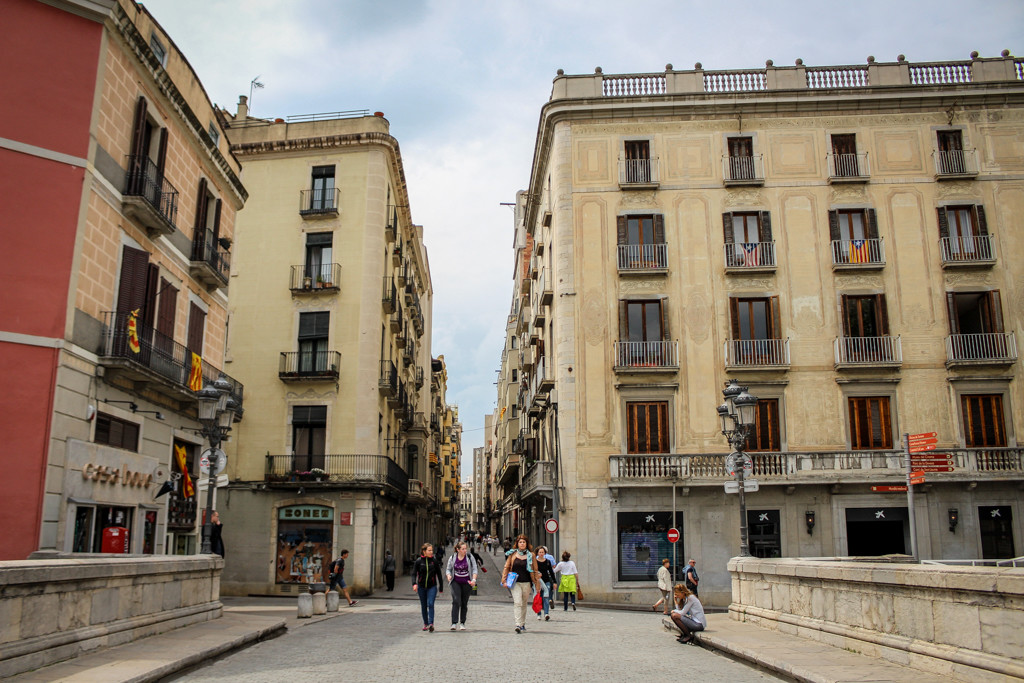
I had merely been there for an afternoon. It felt too soon to leave.
There was plenty more I could have done in Girona, plenty more history I could have learned. In fact, I intend to revisit it the moment I return to Spain.
Should you find yourself in Catalonia, Girona is a city I urge you to visit. Whether you fly a budget carrier into the Girona-Costa Brava Airport or travel an hour by train from Barcelona, stay for a day or two or however long your schedule allows.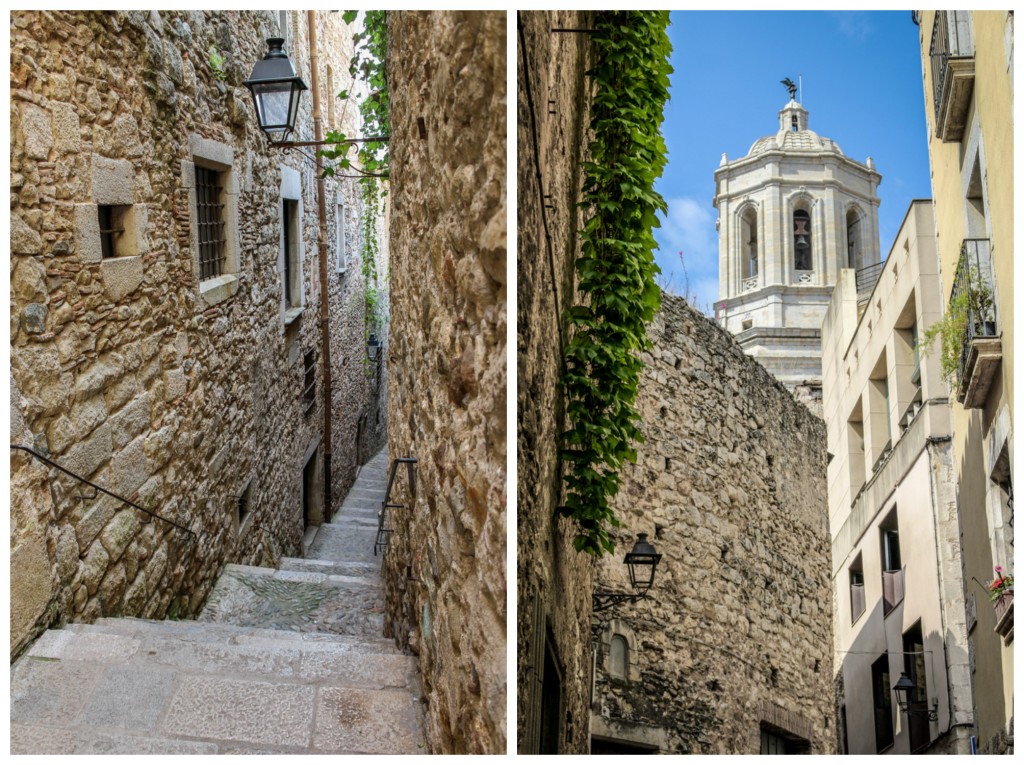 Indulge in tapas and a caña (pint) of beer. Investigate the ancient architecture with a careful eye. Enjoy the peacefulness. Relax.
Indulge in tapas and a caña (pint) of beer. Investigate the ancient architecture with a careful eye. Enjoy the peacefulness. Relax.
Despite what many other travelers may tell you, Girona deserves more than a day trip.
Have you visited the medieval city of Girona? Would you like to?

